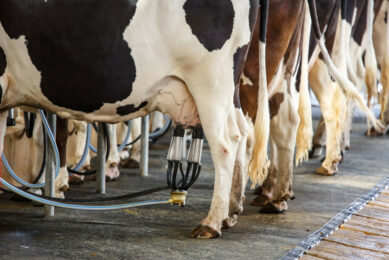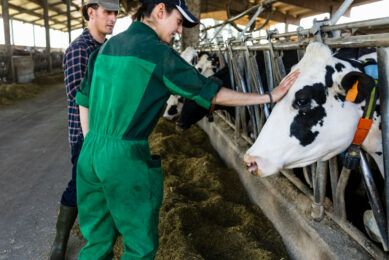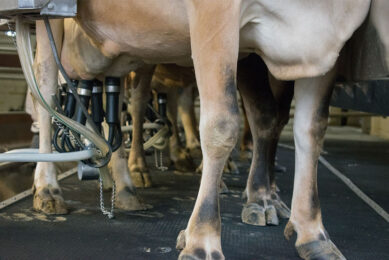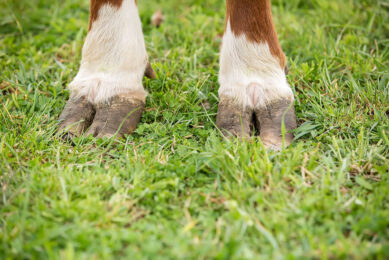Biomarkers for the early identification of lameness in dairy cows
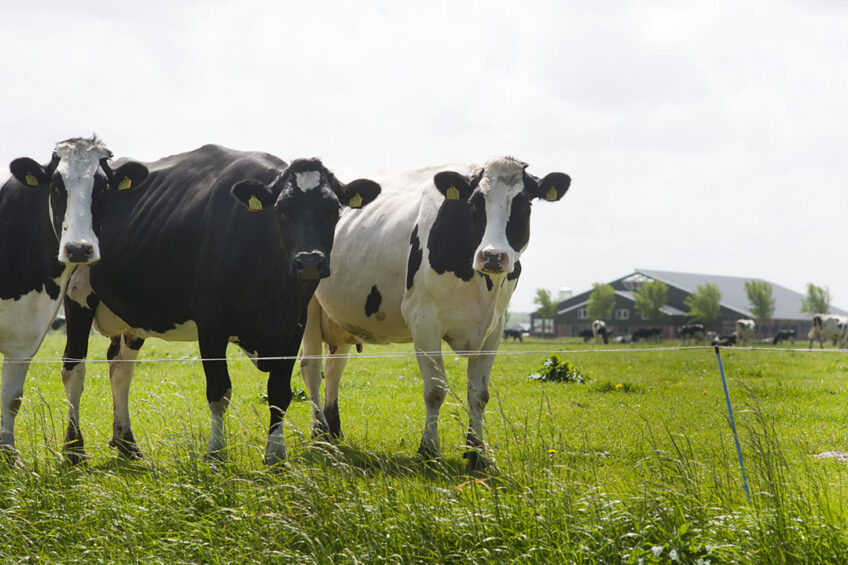
Milk electrical conductivity and serum cortisol level are 2 biomarkers of lameness in dairy cows. Early identification and treatment of lameness using these biomarkers improves milk yield, recovery time, and welfare.
Serum cortisol level
Cortisol concentration is a valuable biomarker of chronic stress. Adverse physiological changes due to retained placenta, displaced abomasum, clinical hypocalcemia, metritis, clinical mastitis, laminitis, and surgical procedures trigger responses of the adrenal glands, which in turn increases glucocorticoid concentrations. In addition, parturition would increase the cortisol concentration.
In dairy cows, the pain experienced from lameness acts as a stressor, thus increasing serum cortisol level. However, the transfer from acute to chronic pain stimuli is an adaptive coping mechanism in dairy cows that diminishes the sensitivity of the adrenal cortex and allows cortisol levels to reach a normal level.
Milk electrical conductivity
The electrical conductivity of milk is an inverse indicator of milk resistance which depends on the vascular reaction strength. The inflammatory process in the cow body, increased ambient temperature, and changed feed are some of the factors that alter the concentrations of sodium, potassium, calcium, magnesium, chlorine, and other ions present in milk. In addition, factors such as genetics, lactation, and changes in milk composition, milk fat concentration, milk solids and milk fraction impact the electrical conductivity of milk.
Studies showed that monitoring affected milk electrical conductivity by measuring potassium, sodium, and other free ions such as chloride is an indirect rapid method of detecting subclinical lameness. Normal milk contains 75-130 mg/100 mL of chloride; however, inflammation can cause the amount of chloride to rise to 111-198 mg/100 mL. The electrical conductivity of healthy cow’s milk is 4.0-5.5 mS/cm. The indicators used to measure milk electrical conductivity include:
- Electrical conductivity at the maximum milk flow (mS/cm)
- Electrical conductivity during the first few minutes of milking (mS/cm)
- Maximum electrical conductivity after reaching the highest milking speed (mS/cm)
- Maximum electrical conductivity following main milking (mS/cm), and
- Beginning of the electrical conductivity peak difference (mS/cm)
Relationship of lameness with serum cortisol level
A study by Paulauskas and colleagues (2023) determined that the average cortisol concentration in dairy cow blood was correlated with lameness score. O’Driscoll and colleagues (2017) showed that cows suffering lameness due to sole ulcers or sole haemorrhage had greater serum cortisol levels than healthy cows.
On the other hand, Almeida and colleagues (2008) and Walker and colleagues (2010) stated that serum cortisol level was 43% higher in lame cows when compared to healthy cows. Furthermore, Juozaitiene and colleagues (2021) found that the average blood cortisol concentration of lame cows was 2.1 times higher than in healthy cows.
Relationship of lameness with milk electrical conductivity
Paulauskas and colleagues (2023) indicated that blood cortisol concentration had the strongest positive correlation with milk electrical conductivity indicators such as electrical conductivity at the maximum milk flow, and maximum electrical conductivity after reaching the highest milking speed, and beginning of the electrical conductivity peak difference, and lameness score.
In addition, Juozaitiene and colleagues (2021) showed that the electrical conductivity during the first few minutes of milking, electrical conductivity at highest milk flow, and maximum electrical conductivity after reaching the highest milking speed were higher in cows with signs of lameness compared with healthy cows.
Conclusion
Lameness is a major welfare concern in dairy cattle, causing pain, decreased milk production, decreased longevity and decreased reproductive function. Lameness score in cows is associated with serum cortisol concentration and milk electrical conductivity indicators, thus measuring these 2 biomarkers could detect clearly defined differences between healthy and lame cows.
However, further study is needed to increase the prediction accuracy of serum cortisol concentration and milk electrical conductivity in automatic lameness detection.
*References are available upon request.



